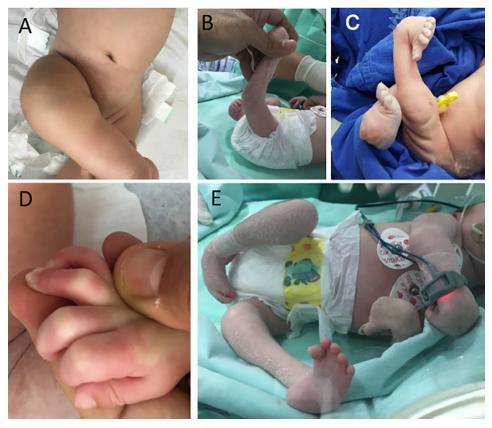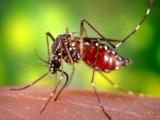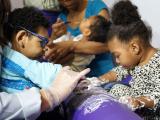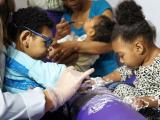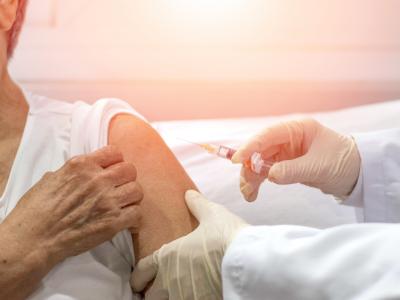Brazilian researchers yesterday described for the first time another complication in babies born with Zika virus infection: a joint deformity known as arthrogryposis.
The new findings underscore warnings from top health officials over the past several months that microcephaly and brain malformations could be the tip of the iceberg regarding birth defects linked to the virus. Though microcephaly was the first Zika-linked manifestation seen in newborns, clinicians who have observed a range of problems refer to the birth defects as congenital Zika syndrome.
In other Zika research developments today, a team led by the University of Kansas unveiled a new Zika risk map that accounts for more factors that earlier maps.
Joint problem seen alongside other birth defects
Researchers from the Brazilian city of Recife, which has been at the center of the outbreak, detailed seven arthrogryposis cases in babies born with Zika virus in an early online edition of the British Medical Journal (BMJ). Though earlier case reports hinted at an association between arthrogryposis and microcephaly in newborns affected by Zika virus, yesterday's report is the first case series.
All of the babies had congenital Zika infections and signs of brain calcification. They were seen at a rehabilitation center in Pernambuco that follows Zika-affected babies. Investigations ruled out other causes of microcephaly, including toxoplasmosis, cytomegalovirus, rubella, syphilis, and HIV. All were born at term, and only one child had a normal head circumference.
Arthrogryposis was seen in both the arms and legs of six babies and only in the legs of the seventh. Electromyelography suggested problems with peripheral motor neurons, and spinal MRI showed thinning of the spinal cord.
Problem linked to Zika attack on nerve cells?
High-definition scans of joints and surrounding tissues found no joint abnormalities, which led the team to suspect that the deformities were neurogenic, affecting muscle contraction and relaxation and producing fixed postures in the womb.
The team wrote that possible mechanisms include Zika virus damage to neurons or neural progenitor cells, already thought to be a culprit in microcephaly and related cerebral malformation. They also said the condition might be related to problems with arteries and veins.
The team said that though more research with larger numbers of babies is needed to identify the neurologic abnormalities that lead to arthrogryposis, children born with Zika virus should receive orthopedic follow-up because of the risk of developing musculoskeletal deformities.
'Expanding list of devastating outcomes'
Siobahn Dolan, MD, MPH, medical advisor to the March of Dimes, said of the new findings, "Everything we're learning from what Brazil is experiencing is concerning." Reports of arthrogryposis seem to be "a downstream effect" and are another sign of how serious the neurologic insult from Zika virus can be to fetuses, she added.
The expanding list of devastating outcomes is tragic, Dolan said.
Clinicians don't yet know what the long-term functional capacity will be for babies born with arthrogryposis, she said. "It will be a while until we know the full spectrum."
Dolan said the complications underscore the importance of steps to protect pregnant women, such as avoiding mosquito bites, taking sexual precautions if a partner may be infected with Zika virus, and avoiding travel to Zika-affected areas.
New map weaves in more Zika factors
The new Zika risk map was recently published on the fast-track publication site of Brazil's Oswaldo Cruz Institute. In a University of Kansaspress release, researchers said the risk is affected by a range of factors, such as climate, socioeconomics, and people's ability to access certain areas.
Breaking down the global land areas into 5-by-5 kilometer squares, the map shows the virus' powerful ability to spread in South and Central America, as well as the first assessment of Zika transmission risk in Europe, which appears to be relatively low. Vulnerable parts of the United States include parts of Florida, Texas, and Louisiana.
Abdallah Samy, PhD, who led the team at the Kansas University Biodiversity Institute, said in the press release that the map can be used by public health officials and international groups to battle the virus. "It's also intended for the public. If you're going to travel to a specific area in Brazil, and you know it's a risk area for Zika, you should consider how to reduce the chances of transmission with clothing or insect repellant," he said.
See also:
Aug 9 BMJ report
Aug 9 BMJ press release
Aug 10 University of Kansas press release
Oswaldo Cruz Zika fast track report
March of Dimes Zika virus and pregnancy advisory
